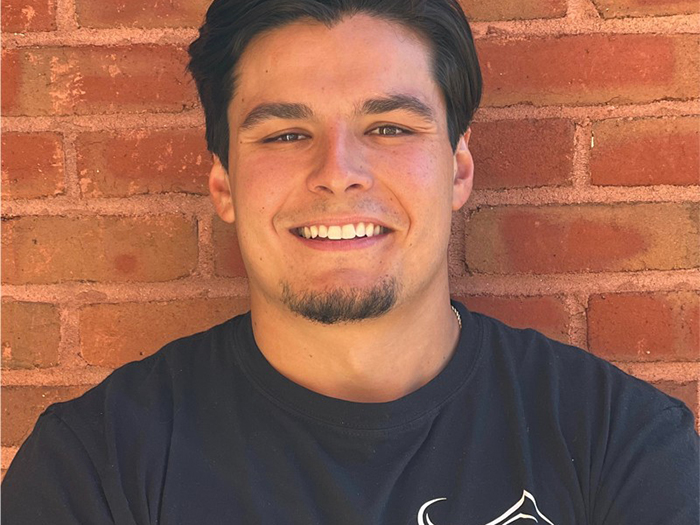PRMA’s Executive Director Diane Delaney Talks to Risk & Insurance About High-Net-Worth Risk Transfer

This spring, Dan Reynolds, the editor-in-chief of Risk & Insurance, caught up with Diane Delaney, the Executive Director of the Private Risk Management Association (PRMA). What follows is a transcript of that conversation, edited for length and clarity.
Risk & Insurance: What attracted you to the role at PRMA after your tenure at AIG?
Diane Delaney: At AIG, a significant part of my role was to ensure that brokers understood how to have conversations with high net worth clients and provide sales training, regardless of what AIG was looking to sell or service. This allowed me to learn about different brokers nationwide.
Joining PRMA gave me the ability to be carrier and broker agnostic. My goal is to ensure the industry comes together in a non-competitive way, working together to navigate this market, especially in today’s climate. Having spent years on the road, I gained valuable insights about different brokers, which aligns well with this position at PRMA, where we now have about 5,000 members.
R&I: What excites you about the opportunities that are currently in front of PRMA and the industry as a whole?
DD: There are a couple of things that excite me. First, the industry now realizes more than ever the importance of education, and they are looking towards PRMA to provide that. It’s inspiring to see so many subject matter experts from various areas, such as fine arts, reinsurance, and E&S, raising their hands and volunteering to educate the membership.
Seeing competitors come together on panels or at our annual summit to help the industry feel hopeful is truly special. It’s a testament to the unique and collaborative nature of our industry, which I believe sets us apart from others.
Secondly, value-based selling has never been as crucial as it is today. While it’s not something PRMA has historically offered, our membership has been asking for it. Last month, we launched our sales training platform, and the feedback has already been fantastic.
From both the industry and PRMA’s standpoint, I think this is an area we will really expand to provide support to the independent agent. It’s an exciting opportunity to make a significant impact and help our members succeed in today’s market.
R&I: What do you see as your chief challenges in the current insurance market landscape, particularly in the high net worth niche?
DD: The access to markets is tough, especially in the high net worth niche where wealthy individuals often prefer to live in locations prone to natural disasters. Carriers are not offering the same solutions as before, leaving independent agents constantly in reactive mode, delivering difficult messages and trying to sell against price.
When rates are going up by 50% to 100%, particularly in Florida, having conversations with clients who are not accustomed to buying in a hard market is really difficult. At PRMA, our challenge is striking a balance between providing educational resources to help our members do their job better and reminding them not to lose sight of providing value to the client, regardless of price.
Finding time to attend training is also a challenge for brokers when they are working twice as hard as before just to retain clients in this space.
R&I: What challenges do insurance providers face when servicing high-net-worth clients with high-value homes in areas prone to natural disasters like floods or wildfires?
DD: Servicing high-net-worth clients with high-value homes in areas prone to floods or wildfires is indeed a challenging task for insurance providers. These natural disasters pose significant risks to the properties, making it difficult to provide adequate coverage.
In such scenarios, insurers must carefully assess the risks associated with each property, considering factors like location, construction materials, and the likelihood of natural disasters occurring. This requires extensive data analysis and sophisticated risk modeling techniques to accurately determine the potential losses.
Moreover, high-value homes often come with unique features and high-end finishes, which can be costly to repair or replace in the event of damage. This means that insurers need to offer specialized coverage options tailored to the specific needs of these clients, which can be complex and expensive.
R&I: Please share your perspective on talent retention in the insurance industry, and how can the industry effectively address this challenge?
DD: Talent retention is a significant issue in the insurance industry, and education plays a crucial role in addressing this challenge. PRMA aims to support independent agents and carriers by providing training and support to individuals, especially those new to selling insurance products.
Lack of training or support is a primary reason why people leave the industry. We strive to prevent this by aligning with organizations to help them develop and retain talent. It’s essential not to lose sight of nurturing the younger generation entering the industry.
When it comes to protecting high net worth individuals, we need to think creatively about attracting talent from diverse backgrounds. For example, students graduating with fine arts or museum studies degrees could be valuable assets in working with insurance carriers to protect clients with fine arts collections.
We believe that the most successful people in this niche often come from non-traditional backgrounds. To foster this diversity, we are partnering with universities and inviting students to our annual summit. There, they will have the opportunity to meet with experts from various fields within the industry.
By emphasizing how our products help preserve the lifestyles that high net worth individuals have worked hard to build, we can appeal to the younger generation’s desire to make a difference. While we must provide training for all generations, we want to place a special emphasis on engaging with students as they enter the workforce.
R&I: Are there emerging technologies that are gaining traction among brokers to help prevent losses in high-value homes, such as those vulnerable to water damage or wildfires?
DD: There are numerous technologies that clients and brokers are leveraging to better secure homes and prevent losses. I recently reached out to our board to gather examples from across the US, and I have about three pages worth of stories that I can share with you after this.
One notable example is a company that many high net worth carriers are comfortable with, particularly for homes in wildfire-prone areas. They install exterior fire sprinklers that can be controlled through a simple phone app, similar to leak detection systems inside the house.
Even if you’re away from home, you can activate the sprinkler system to saturate the property in a 30 to 40-foot perimeter when you detect or know that there’s a wildfire nearby. Additionally, they offer the option to deploy a foam that completely coats the entire area, which has proven effective in protecting homes from being torched by embers.
These technologies are crucial in areas where obtaining insurance might be challenging, as they allow clients to take measures to minimize the severity of potential losses. I’m meeting with new vendors in this space on a weekly basis, offering solutions for both the interior and exterior of homes.
As these technologies demonstrate their effectiveness and more clients adopt them, the industry is hopeful that reinsurance companies will recognize the value of these protective measures, ultimately leading to reduced losses for insurance carriers. The increasing willingness of clients to implement these solutions is a positive development for the industry as a whole.
R&I: What emerging or existing risks do high net worth clients struggle with the most, aside from catastrophic events?
DD: Aside from catastrophes, a significant issue for high net worth clients is the difficulty in accessing excess liability limits to protect their net worth, especially in light of recent tort trends. Hub recently published a post highlighting the current state of claims in the courts and the potential impact on people’s net worth.
In the past, obtaining excess liability policies with limits of $10 million, $15 million, $50 million, or even $100 million was not a problem. However, today, it has become extremely challenging for clients to secure such coverage, leaving a substantial portion of their net worth exposed.
Depending on the state of residence, a simple accident can result in personal liability. Finding a solution to adequately protect high net worth individuals in the current market is difficult and a cause for concern among clients.
R&I: What is your perspective on the current state of cyber risk and its impact on high net worth individuals?
DD: The cyber risks we face today are unprecedented. As an industry, we’ve struggled with the limited availability of products that clients can purchase to protect themselves.
There has been a lack of education for both brokers and clients about the existing options. To address this, we plan to focus on cyber risk at our annual summit, discussing the available protection measures.
Cyber risk is a serious issue that is likely to worsen as technology continues to advance. It is crucial that we stay informed and prepared to mitigate these risks effectively.
R&I: What challenges does the increasing sophistication of cyber attacks, particularly those leveraging artificial intelligence, pose to individuals and organizations?
DD: The potential consequences of a cyber attack can be overwhelming for both clients and individuals. If someone’s personal information, such as their Social Security number, is compromised, they may not know where to start in terms of resolving the issue.
As an industry, we have a responsibility to educate clients on what steps to take and who to consult in the event of a cyber attack. They will inevitably be targets, and it’s crucial that they are prepared and know where to turn for help.
R&I: Are there experiences or individuals that have significantly influenced your career?
DD: Throughout my career, several individuals have influenced me in various aspects of my roles. One notable example is Cindy Zubian, a prominent female leader at Allianz, who previously worked at Frank Crystal before their merger.
In an industry where female leadership was rare, especially in the past, Cindy stood out as a strong and influential figure. She demonstrated exceptional skills in protecting clients and effectively guiding her brokers and account managers.
I have learned a great deal from observing her approach and the way she imparts knowledge to her team. Her impact on my professional development has been significant.
R&I: What unique insights have you gained from working with a board of trustees comprised of industry leaders from various organizations?
DD: Having 20 board members, each running their own organizations, such as Haggerty, Pure, Vault, Chubb, Hub, and Marsh, presents a unique challenge as they are all competitors coming together at the same table. However, this also provides me with an incredible opportunity to learn from their expertise and gain insights into where they want to see the industry heading.
Every day, I feel as though I have 20 mentors who are not only at the forefront of the industry but also guiding me on how we can navigate this path together. Their diverse perspectives and wealth of knowledge have been invaluable in shaping my understanding of the industry and its future direction.
Despite the inherent challenges of working with a board comprised of competitors, the benefits far outweigh the difficulties. The collective wisdom and experience they bring to the table have been instrumental in helping me grow as a leader and in steering our organization towards success.
R&I: Is there an aspect of the high net worth insurance industry that you believe is often overlooked or misunderstood by professionals in the field?
DD: I believe our industry often fails to fully grasp the unique needs and expectations of high net worth individuals when it comes to insurance. As professionals transition from serving middle-market clients to the affluent space, they must adapt their approach and mindset accordingly.
It’s not just about providing coverage; it’s about understanding what keeps these clients up at night. We need to consider their legacy, their family’s future, and the irreplaceable value of their custom-built homes and possessions. Simply offering insurance jargon and features is not enough.
We must communicate the true worth and differentiation of our services. Wealth advisers alone cannot protect a client’s legacy when disaster strikes and their home is underinsured. As an industry, we must step back from the traditional sales approach and engage in meaningful conversations that address the specific concerns and aspirations of high net worth individuals.
R&I: What additional insights or perspectives would you like to share that we haven’t covered in our discussion so far?
DD: One important aspect we haven’t touched on is the role of data analytics in our industry. At PRMA, we’ve been investing heavily in advanced data analytics capabilities to enhance our underwriting processes and risk assessment.
By leveraging vast amounts of data and sophisticated algorithms, we can gain deeper insights into risk patterns, customer behavior, and market trends. This allows us to make more informed decisions, price our products more accurately, and ultimately provide better value to our clients.
Moreover, data analytics enables us to identify new opportunities for growth and innovation. By analyzing data from various sources, we can uncover untapped market segments, develop tailored products, and offer personalized services that meet the evolving needs of our customers.
As the insurance landscape continues to evolve, we believe that data analytics will play an increasingly crucial role in driving success and differentiation. It’s not just about collecting data; it’s about harnessing its power to make smarter decisions, improve operational efficiency, and deliver superior customer experiences.
R&I: Are you willing to share your thoughts on the current state of the insurance industry and the role of reinsurance in navigating market cycles?
DD: The insurance industry is constantly evolving, and reinsurance plays a crucial role in helping insurers navigate various market cycles. In the current environment, where the market is neither hard nor soft but rather in a consolidating phase, reinsurance becomes even more important.
At PRMA, we aim to maintain profitability on a gross basis, which means relying less on quota share reinsurance. Instead, we focus on specialty lines of business that require bespoke underwriting, thorough risk evaluation, and typically involve lower frequency but higher severity claims.
In these specialty lines, we leverage excess reinsurance to protect our balance sheet. This allows us to take on risks that align with our expertise while mitigating potential losses. By carefully managing our reinsurance program, we can navigate the challenges of the current market cycle and position ourselves for long-term success.
R&I: How important is it to share stories and experiences within an organization, particularly at the board level?
DD: Sharing stories and experiences within an organization is incredibly valuable, especially at the board level. Our board recently shared some insightful stories that highlight this importance.
These narratives serve as powerful tools for conveying lessons learned, best practices, and the organization’s culture and values. When board members share their experiences, it helps to create a shared understanding and alignment across the leadership team.
Moreover, these stories can inspire and motivate employees, demonstrating the real-world impact of their work and the challenges that have been overcome. I believe that fostering a culture of storytelling and experience-sharing is essential for building a strong, cohesive, and resilient organization. &










